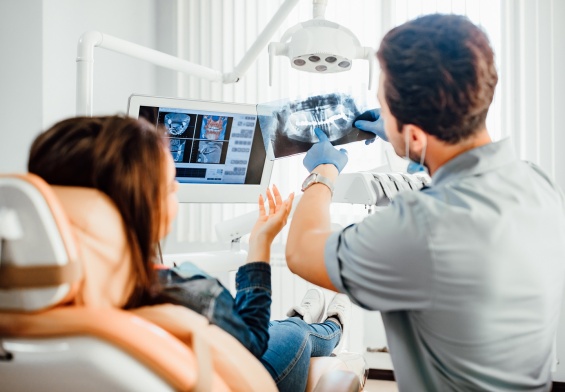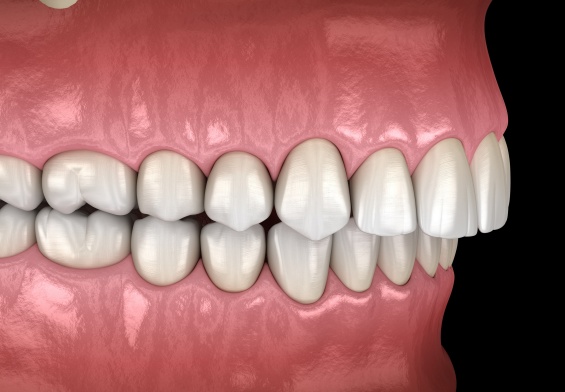Braces are an almost iconic way to straighten teeth and improve overall oral health. Almost every teenager these days gets the full braces experience, whether they want a better smile or to address orthodontic concerns like TMJ (temporomandibular joint) disorders. Modern braces come in a bunch of unique styles and types, each with its own pros and cons, depending on your specific needs, lifestyle, and dental condition. In this article, we’ll cover some of the most common types of braces, including traditional metal braces, ceramic braces, clear aligners, and lingual braces.
Metal Braces
Metal braces are the most commonly used and time-tested types of braces, often what comes to most peoples’ minds when they hear the word “braces”. They’re made of stainless-steel brackets and wires that apply continuous pressure to move teeth into their correct position. Metal braces are quite popular among orthodontists because they can fix severe alignment issues.
They’ve also seen some changes over the years, with modern versions being more comfortable than they used to be, with smaller, lighter brackets. Metal braces Livingston residents choose also tend to be more cost-effective than other options. That said, metal braces are the most obvious and conspicuous type of braces, so they’re not ideal if you’re looking for discretion.
- Pros: Affordable, effective for complex cases, durable, customizable with colored bands.
- Cons: Highly visible, may cause some discomfort, require regular adjustments.
If you have TMJ pain, metal braces can help align the bite properly, taking stress off the jaw joint. This makes them a good option for those seeking Livingston braces for TMJ.
Ceramic Braces
Ceramic braces are similar to metal braces but use clear or tooth-colored brackets that blend in with the natural color of your teeth. As a result, they’re popular with people that want the effectiveness of traditional braces without the obvious metallic look.
Although ceramic braces NJ orthodontists recommend are less noticeable, they can be more fragile and prone to staining if they’re not taken care of properly. Their brackets are usually larger, and you’ll need to wear them for a longer period of time because they’re more delicate.
- Pros: Less noticeable, effective for most cases, more aesthetically pleasing.
- Cons: More expensive than metal braces, can stain, more prone to damage.
Ceramic braces can provide a good balance between aesthetics and functionality for those who need the power of metal braces but want something less visible. They can also be a great choice for people undergoing TMJ treatment Livingston orthodontists recommend, as they help improve jaw alignment while keeping the treatment discreet.
Clear Aligners
Clear aligners like Invisalign are a modern alternative to traditional braces. They’re a series of removable plastic trays that move your teeth into place over time. Clear aligners are nearly invisible, so they’re a great option for adults who don’t want visible metal or ceramic brackets.
One of the main advantages of clear aligners Livingston orthodontists offer is their flexibility. You can remove the aligners to eat, drink, and clean your teeth, so they’re incredibly convenient if you lead a busy lifestyle. However, that flexibility requires discipline, since the aligners need to be worn for at least 20-22 hours a day to be effective.
- Pros: Nearly invisible, removable, no dietary restrictions, comfortable.
- Cons: Requires discipline to wear, may not be suitable for severe cases, can be more expensive.
Clear aligners are excellent for mild to moderate cases, but less effective for severe bite or alignment issues. They may also help alleviate mild TMJ symptoms by improving bite alignment over time.
Lingual Braces
If you’re looking for the effectiveness of traditional braces without any visible hardware, lingual braces are likely your best option. They attach to the back of your teeth, so they’re completely invisible from the front.
Lingual braces are custom-made for each patient, so they tend to be more expensive than traditional or ceramic braces. They’re also harder to clean and adjust, which may lead to a longer treatment time. That said, they’re still a great solution for those who are conscious about appearance and still need effective orthodontic treatment.
- Pros: Invisible from the front, effective for most cases, customizable.
- Cons: Expensive, harder to clean, may cause tongue discomfort initially.
For those dealing with TMJ disorders, lingual braces can realign the teeth and bite without the aesthetic concerns that come with traditional braces. Some patients go for these invisible braces TMJ treatment plans due to their discretion and efficiency.
Self-Ligating Braces
Self-ligating braces are also gaining a lot of popularity these days. They’re similar to traditional metal braces but use clips instead of elastic bands to hold the wire in place. As a result, there’s less friction and they’re easier to adjust, which can lead to a shorter treatment time. Self-ligating braces also come in metal or ceramic varieties, depending on your preference.
- Pros: Faster treatment, less discomfort, fewer adjustments required.
- Cons: More expensive than traditional braces, may still be visible.
Self-ligating braces are a good option for patients looking for a quicker and more comfortable treatment process, especially if you’re undergoing Livingston braces for TMJ as they help relieve pressure on the jaw by gradually aligning the bite.
Choosing the Best Option for You
When choosing braces, you need to take your specific dental needs, lifestyle, and aesthetic preferences into account. While metal braces Livingston patients often choose are the most durable and cost-effective, options like ceramic braces NJ and clear aligners Livingston offer a more discreet solution for those concerned about appearance.
If you’re dealing with TMJ issues, correcting your bite with the right type of braces can be key to reducing discomfort. Whether you opt for invisible braces TMJ specialists recommend or choose traditional metal braces, consulting with one of the best orthodontists in Livingston will help you make the right decision for your health and smile.
Schedule a consultation with a local orthodontist today to explore which braces are the best fit for your unique situation.




